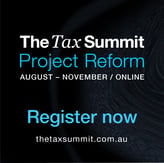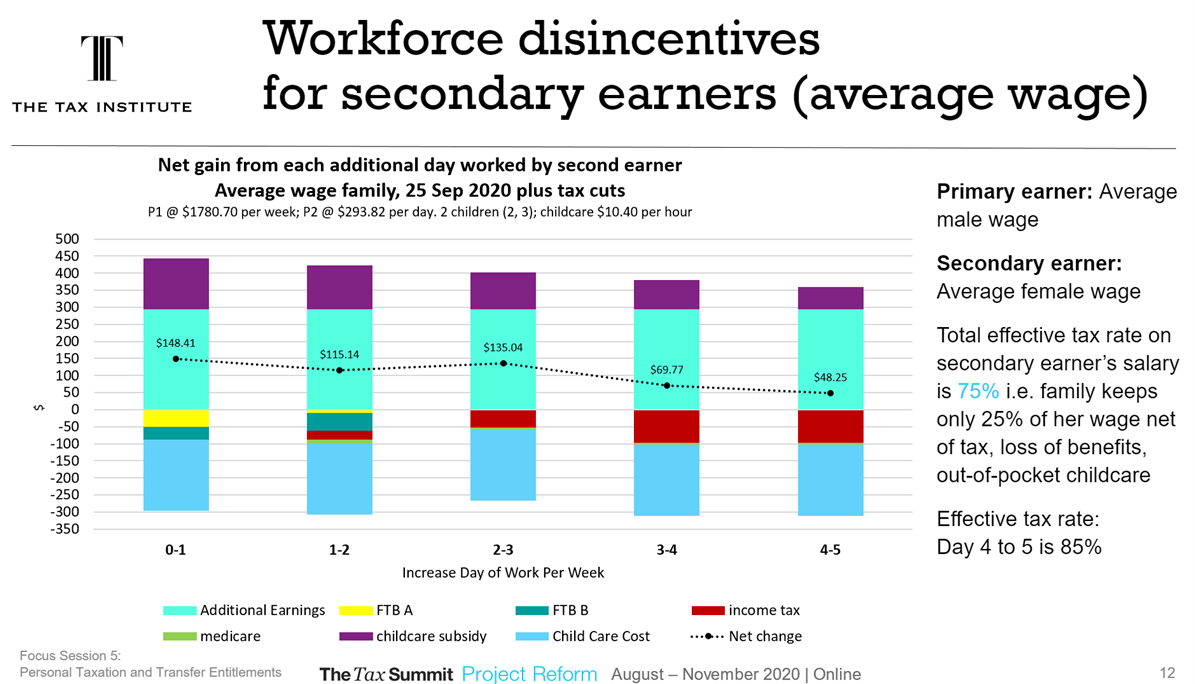-png-1.png)
Our recent Focus session on Personal Taxation and Transfer Entitlements at The Tax Summit: Project Reform, featured expert speakers Dr Ann Kayis-Kumar, UNSW, and Prof Miranda Stewart, CTA, ANU & UniMelb, in a presentation facilitated by The Tax Institute’s President, Peter Godber, CTA.
This engaging session covered the interaction between the personal taxation and transfer systems, and how reforms could improve efficiencies. Miranda and Ann discussed in depth the impact of high effective tax rates on secondary earners – primarily working mothers in Australia – and the interaction between a progressive income tax and a means-tested transfer system. They also discussed the age pension, the PIT base and options for reform around the FBT.
There were also many insightful and complex questions brought to the session Q&A by our attendees. While many were answered within the session (Virtual Summit ticket holders can re-watch the recorded session on-demand) these are a few queries which Miranda answered for us after the live session.

There’s more where that came from. To watch the full webinar and engage with the ideas Ann and Miranda raised, register for a Full Access Virtual Pass to The Tax Summit: Project Reform. Your pass includes access to all future sessions and the recordings of past sessions.
1. How far would tax relief for the secondary income earner in a family with children under five (e.g. in the form of a $70,000 tax free threshold) go towards encouraging workforce participation? And could this then be used to remove some of the complexity?
Miranda: The chart that decomposes the different elements of the effective ‘tax’ rate on the second earner show that income tax (the red colour) is less important than childcare cost in terms of workforce participation.
This proposal would mean that about half the working/taxpaying population would not pay any income tax and that is fiscally unsustainable. I suggest it is better to ‘target’ the subsidy to those who are responsive, hence the suggestion to focus on childcare costs as the main issue.

Source: Miranda Stewart and David Plunkett cameo modelling (October 2020)
2. As casualization, sham casualisation and sham contracting spread, so does a shift of operating business costs to the worker. Standard deduction on the USA model means no tax relief for the shift. Options?
Miranda: A Standard Deduction could apply to all individual taxpayers not just wage earners – so this would also apply for casual, shift etc. workers. But relying on employers to pay for expenses of course would benefit employees but not individual contractors. Agree that the more ‘individualised’ our work economy is, the more individuals also need to be able to recognize their costs through a deduction.
3. I like [the idea raised in the session of] abolishing FBT ‐ for NFP's [perhaps] bring in a simple tax-free cash allowance?
Miranda: This is an interesting idea as a policy option to support remuneration by NFPs. It would operate as a kind of ‘wage subsidy’ for those who work in the NFP sector.
Listen to some of Miranda’s thoughts on FBT below.
4. Do the speakers have a view about the taxation of housing?
Miranda: We did not focus on housing as it was a topic of the Focus group on Saving and Wealth.
There is a good policy argument for reducing the CGT discount (a bit) and for limiting negative gearing, and potentially taxing extremely large capital gains on the home (over a very high threshold). This would all broaden the base for taxation of capital and assets, a little, enabling us to lower personal tax rates a little if we want to do that.
5. Is taxing spending a better way and not worrying about where the money is earnt?
Miranda: We could certainly increase the rate/broaden the base of the GST, and hence tax spending more and could then tax earnings less. However, as the personal income tax is by far the most important tax in our system, there is a challenge to raise enough revenue fairly by relying only on consumption tax.
Related reading: GST reform in post-COVID Australia: insights from John Hewson
6. As there appears to be a discrepancy between male & female income averages, wouldn’t it be a fairer system to add primary & secondary income together? Take 50% and use this income as the childcare subsidy income rational.
Miranda: It is the ‘adding together’ of primary and secondary income in the ‘joint unit’ that causes the high ‘effective’ tax rate. This seems to be a suggestion to tax all families at a flat 50% tax rate and then to fund childcare. That would be quite an interesting and big change from our current tax rate structure!
This was just a snapshot of some of the ideas discussed in the session. To listen to all the insights raised, register for a Full Access Virtual Ticket to The Tax Summit: Project Reform, for access to all sessions, past and present.
Have your say.
Head to our member forum, Community, to continue the discussion around Ann and Miranda’s insights.
 |
Prof Miranda Stewart, CTA, ANU & UniMelb |
 |
Dr Ann Kayis-Kumar, UNSW |









